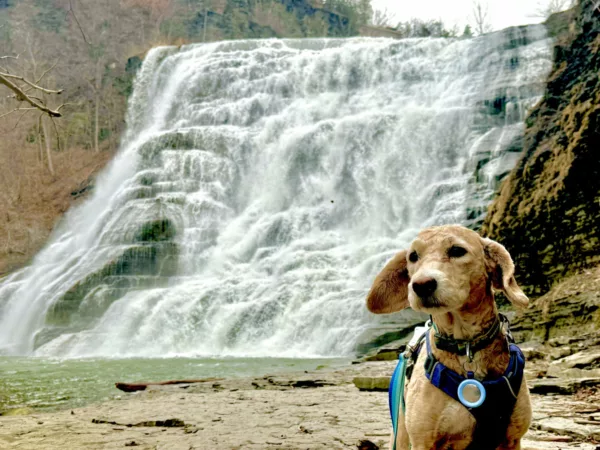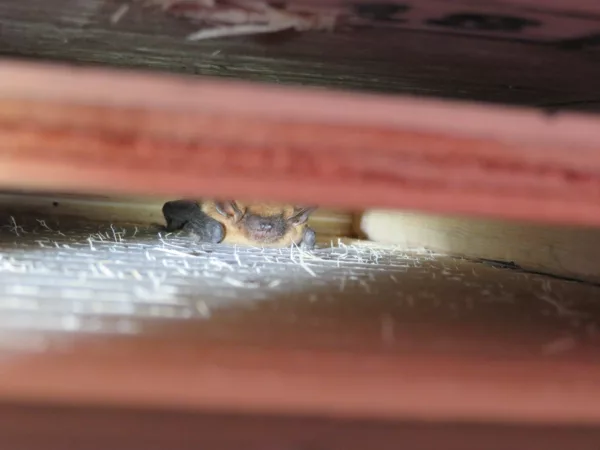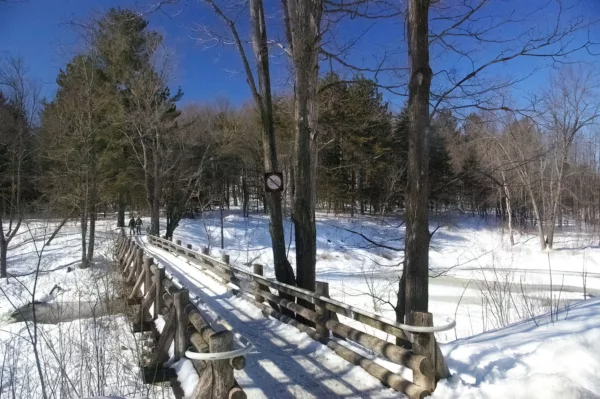How to Poop in the Outdoors

Pooping outdoors can be a major source of anxiety for many people. Once you’ve perfected outdoor poops, they can actually be pleasant experiences, often superior to using an indoor toilet, because of perks like the view, the privacy and, sometimes, a nice breeze on your bum. They can also be mosquito-infested, cold, stinky or unexpectedly public, but these make for great pooping horror stories to tell around the campfire. Here are some tips for how to have as pleasant and environmentally responsible an outdoor poop as possible, in a variety of settings.
 Credit: Taylor Maavara
Credit: Taylor Maavara
Before heading out, it’s important to do some quick research. The main thing to look into is what the human waste guidelines are for the area you’ll be in. Are there accessible outhouses? If not, the ecoregions in Canada have Leave No Trace principles for how to dispose of waste, and provincial, territorial and national parks have information on their websites. I’ll touch on the most common practices in each of the sections below, but be aware this can vary from region to region depending on how busy the places are, how remote, the climate and so on.
Outhouses, Thrones and Thunderboxes

If an outhouse is available when you’re outdoors, use it, even if it’s a bit of a walk. Outhouses can vary wildly in quality. Some have no smell, ample toilet paper and inspirational poems stapled to the walls. Others will make you gag from the smell, are filled with flies and the only toilet paper is soaking wet and all over the floor. My main tip is to never assume that outhouses will have toilet paper or hand sanitizer, so bring your own. Please be considerate and don’t leave a mess. Close the lid when you are done; this will keep the smell down and the flies at bay. Don’t dispose of feminine hygiene products or other trash in the toilet. Bring a plastic bag to pack out your trash.
Thrones and thunderboxes are sub-categories of outhouses. Thrones can mostly be found in the backcountry in Canada’s mountain parks, while thunderboxes are generally associated with backcountry camping in Ontario provincial parks, but I’ve encountered both around the country. Thrones are usually green plastic while thunderboxes are wooden. Both give your bum privacy, with your shoulders and head visible so folks can see the loo is occupied. Thrones in particular are often found in the most beautiful locations in Canada, so take your time, enjoy your top tier poop and close the lid. As with outhouses, bring TP and sanitizer and don’t dump your trash.
Catholes
 On longer backcountry trips, it’s common practice to dig a cathole for your poop with a small trowel. The usual guideline is to ensure you’re at least 60 metres from bodies of water, your campsite or other public places, so you don’t pollute water sources or contaminate drinking water or cooking areas. Dig your hole in organic soil (i.e., not sand or gravel) at least 15 centimetres deep and 10 centimetres wide. I try to find a secluded spot with an excellent view. It’s best to get into a full squat as opposed to trying to hover, which is riskier and a harder position to maintain. Aim as best you can. If you miss, use a stick to move the poop into the hole, and leave the stick in the hole. Pack out your toilet paper in a plastic bag, keeping it inside an opaque bag so you don’t need to look at it. If you haven’t got toilet paper, find some nice big leaves, moss, snow or, if you’re desperate, a smooth rock. You can leave these in the hole. You can also buy a small bidet attachment for water bottles. Fill your hole back in with dirt and cover with leaves and sticks. Remember: never touch the poop with your trowel; it’s for dirt only. If the bugs are bad, cathole poops can be miserable, so try to find a spot with a breeze and use your arms as “windshield wipers” for your bum to keep the bugs from truly feasting.
On longer backcountry trips, it’s common practice to dig a cathole for your poop with a small trowel. The usual guideline is to ensure you’re at least 60 metres from bodies of water, your campsite or other public places, so you don’t pollute water sources or contaminate drinking water or cooking areas. Dig your hole in organic soil (i.e., not sand or gravel) at least 15 centimetres deep and 10 centimetres wide. I try to find a secluded spot with an excellent view. It’s best to get into a full squat as opposed to trying to hover, which is riskier and a harder position to maintain. Aim as best you can. If you miss, use a stick to move the poop into the hole, and leave the stick in the hole. Pack out your toilet paper in a plastic bag, keeping it inside an opaque bag so you don’t need to look at it. If you haven’t got toilet paper, find some nice big leaves, moss, snow or, if you’re desperate, a smooth rock. You can leave these in the hole. You can also buy a small bidet attachment for water bottles. Fill your hole back in with dirt and cover with leaves and sticks. Remember: never touch the poop with your trowel; it’s for dirt only. If the bugs are bad, cathole poops can be miserable, so try to find a spot with a breeze and use your arms as “windshield wipers” for your bum to keep the bugs from truly feasting.
WAG Bags
 “Waste alleviation and gelling” bags are essentially human doggy bags containing a powder to turn your poop into gel. You can also buy poo powder separately if you’re on a budget to make your own WAG bags. If you are headed to a busy trail or outdoor area and know that you’re a midday pooper and that an outhouse will not be easily accessible, bring a WAG bag. These bags are also ideal for winter poops and alpine or desert environments including tundra where you can’t find organic soil to dig a cathole. The sediments in these regions don’t contain the microbes that break down poop, so it’s better practice to pack it out. Hold the WAG bag around your bum to help you aim or build a little seat out of rocks to support the bag. I try to pee before I get into position with the WAG bag to avoid peeing all over the outside of the bag or filling it up with liquid. When you’re done, squeeze out the air (turn your face away!) and zip it shut. WAG bags are pretty durable, but if you’re using a DIY bag, it’s worth double-bagging or tossing it into an empty Pringles can. Throw it into a regular garbage bin when you next find one.
“Waste alleviation and gelling” bags are essentially human doggy bags containing a powder to turn your poop into gel. You can also buy poo powder separately if you’re on a budget to make your own WAG bags. If you are headed to a busy trail or outdoor area and know that you’re a midday pooper and that an outhouse will not be easily accessible, bring a WAG bag. These bags are also ideal for winter poops and alpine or desert environments including tundra where you can’t find organic soil to dig a cathole. The sediments in these regions don’t contain the microbes that break down poop, so it’s better practice to pack it out. Hold the WAG bag around your bum to help you aim or build a little seat out of rocks to support the bag. I try to pee before I get into position with the WAG bag to avoid peeing all over the outside of the bag or filling it up with liquid. When you’re done, squeeze out the air (turn your face away!) and zip it shut. WAG bags are pretty durable, but if you’re using a DIY bag, it’s worth double-bagging or tossing it into an empty Pringles can. Throw it into a regular garbage bin when you next find one.
More Outdoor Adventure Skills:
<div class="articleLink">
<div class="articleImage"><a href="10-DIY-Homemade-Fire-Starters" class="imageBox" style="background-image: url('https://explore-mag.com/wp-content/uploads/2024/02/outdoor-adventure-fire-survival-emergency-skills_max-jpg.webp')"> </a></div>
<a href="10-DIY-Homemade-Fire-Starters" class="articleLinkTitle">10 DIY Homemade Fire Starters</a><br>
<div class="articleLinkText">Being able to start a fire <a href="https://explore-mag.com/outward-bound-canada-mace/">outdoors is often part of the experience</a> and, in emergency situations, can be a vital component of survival.</div>
<a href="10-DIY-Homemade-Fire-Starters" style="float: right">Read More ></a>
<div class="clearfix"></div>
</div>
<div class="articleLink">
<div class="articleImage"><a href="What-Is-Geocaching-and-How-Do-I-Get-Started" class="imageBox" style="background-image: url('https://explore-mag.com/wp-content/uploads/2024/02/geocache-outdoor-experiences_max-jpg.webp')"> </a></div>
<a href="What-Is-Geocaching-and-How-Do-I-Get-Started" class="articleLinkTitle">What Is Geocaching and How Do I Get Started?</a><br>
<div class="articleLinkText">Caches are often hidden in places like beneath boulders and bushes and inside hollow tree trunks. Though most come in waterproof containers...</div>
<a href="What-Is-Geocaching-and-How-Do-I-Get-Started" style="float: right">Read More ></a>
<div class="clearfix"></div>
</div>
<div class="articleLink">
<div class="articleImage"><a href="Would-You-Replace-Your-Campfire-With-a-Propane-Fire-Pit" class="imageBox" style="background-image: url('https://explore-mag.com/wp-content/uploads/2024/02/which-campfire-would-you-choose_max-jpg.webp')"> </a></div>
<a href="Would-You-Replace-Your-Campfire-With-a-Propane-Fire-Pit" class="articleLinkTitle">Would You Replace Your Campfire With a Propane Fire Pit?</a><br>
<div class="articleLinkText">I asked our Instagram followers if they would ever bring a propane fire pit with them camping, and 50 per cent of respondents answered a resounding, “No, I never have & don’t want to.”</div>
<a href="Would-You-Replace-Your-Campfire-With-a-Propane-Fire-Pit" style="float: right">Read More ></a>
<div class="clearfix"></div>
</div>














